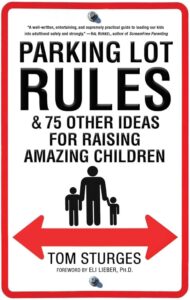Book: History of Independent Cinema
Posted on May 25, 2009 at 3:58 pm
Many thanks to Phil Hall for taking the time to be interviewed about his new book, The History of Independent Cinema.
How do you define independent cinema?
I see independent films as productions that are financed and created outside of the Hollywood studio system.
Who were some of the earliest pioneers?
You would need to go back to the silent era. Carl Laemmle and Adolph Zukor challenged the attempt by Thomas A. Edison to create a monopoly on film production and distribution. Those two men literally kicked down the door to enable independent filmmaking to flourish. D.W. Griffith’s “The Birth of a Nation” may be a morally reprehensible film, but it was the first independently produced film to elevate a cinematic release to the level of national conversation. L. Frank Baum, the author of “The Wizard of Oz,” is responsible for the first film franchise, circa 1914 with a brief series of Oz-related films. Lee DeForest and Theodore Case were the leaders in bringing sound to film, while Herbert Kalmus and his partners at the Technicolor Corporation helped to expand the cinematic palette beyond black and white.
Where do independent films get financing?
Traditionally, from private investors. Some filmmakers have self-financed their work, which is easier to do today since the costs of equipment is not very expensive.
What have been some of the innovations in independent film-making that have been adopted by studio films?
For starters, the first film made in Hollywood was an independently financed production – Cecil B. DeMille’s 1913 “The Squaw Man.” The concept of the movie star was invented by Carl Laemmle, who also cooked up the first movie publicity stunt (the rumor that his first star, Florence Lawrence, was killed in a streetcar accident).
As previously mentioned, the use of color and sound in filmmaking and the film franchise originated with independent producers. The use of three-dimensional cinematography, widescreen projection, and video in place of 35mm film stock were all independent creations.
Which independent directors have become mainstream? Which independent actors?
There is a list in the book that I call the indie-to-Hollywood train, and its passengers have included Francis Ford Coppola, Martin Scorsese, John Waters, Ralph Bakshi, George Lucas, Terrence Malick, Tobe Hooper, John Carpenter, Joan Micklin Silver, David Lynch, Joe Dante, Susan Seidelman, Joel and Ethan Coen, Gus Van Sant, Spike Lee, Steven Soderbergh, Richard Linklater, Quentin Tarantino, Kevin Smith, Robert Rodriguez, Edward Burns and Darren Aronofsky.
As for actors, Jack Nicholson is arguably the most prominent – rising from Roger Corman’s no-budget flicks to winning three Academy Awards.


